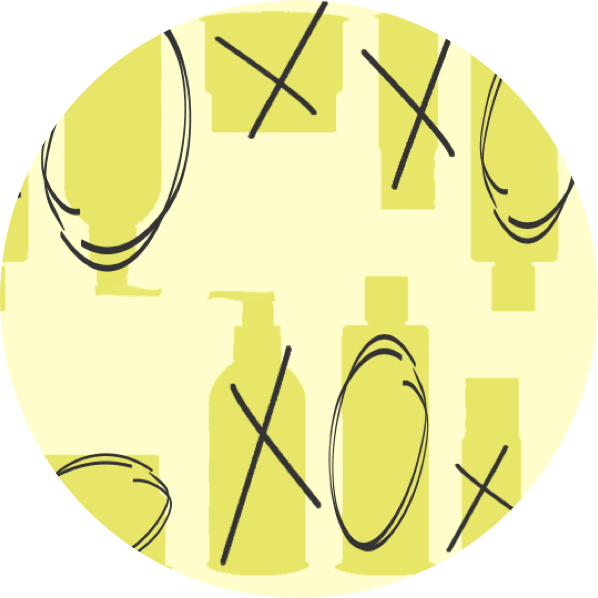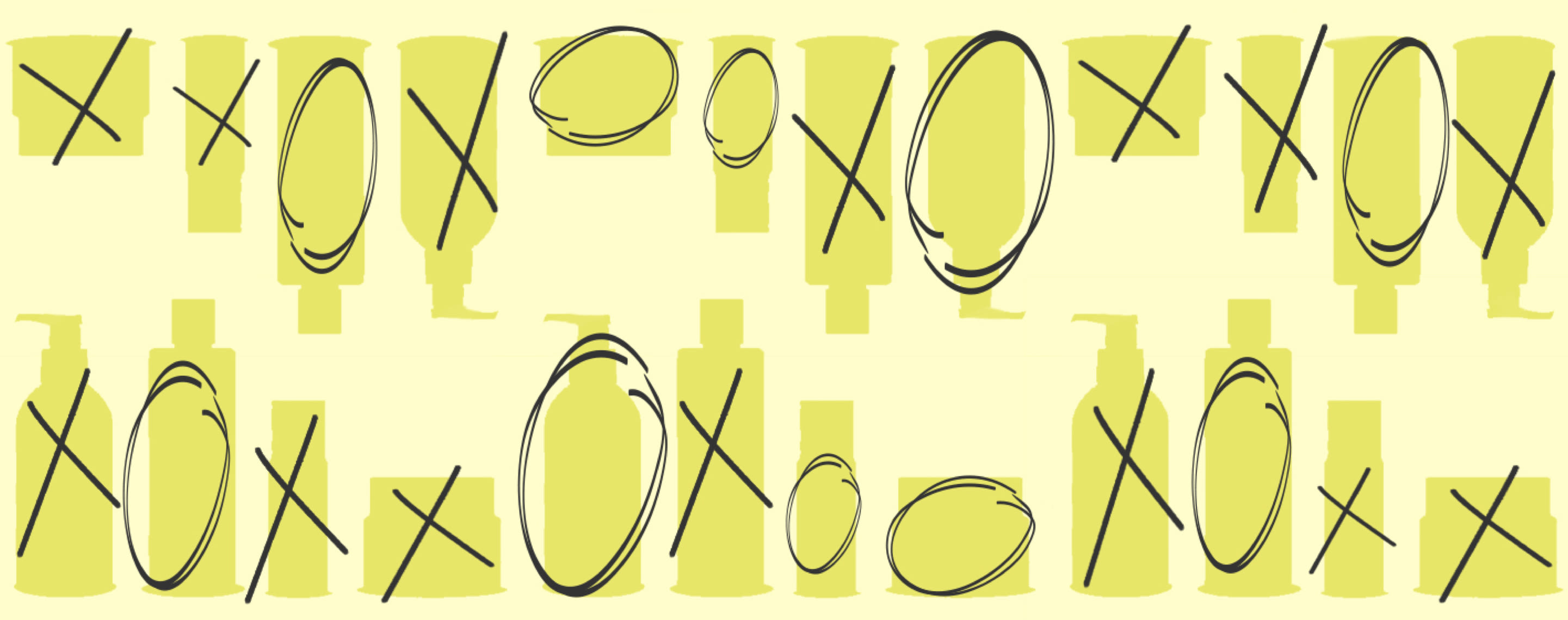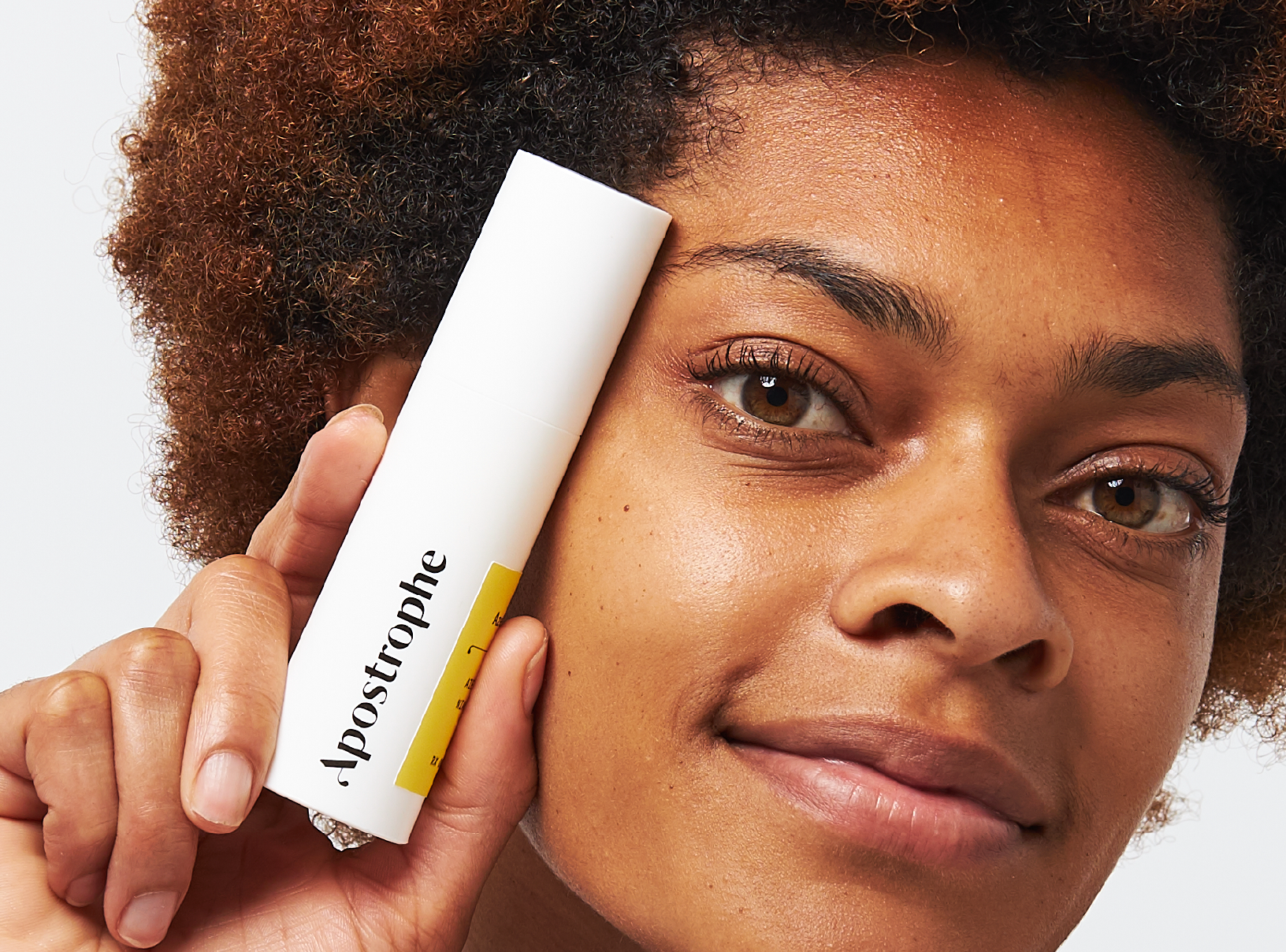Education
Skincare routine steps: the correct order


SHARE
Education
Skincare routine steps: the correct order
Medically reviewed by Jill Johnson, DNP, APRN, FNP-BC
Written by Apostrophe Team
Last updated 4/1/2024
You likely know your skin is made up of several layers, and sometimes the internal ones can affect how it looks on the outside.
To keep your complexion looking healthy and to avoid skin issues like irritation or the always-annoying adult acne, these layers are usually supported by a number of skincare products applied in the correct order.
The only question is, what even is the correct order to apply these products to your skin?
If you've ever wondered where cleansers go, or if serums are a must-have, and just why exactly 10-step routines are a thing, you're not alone.
Let’s peel back the skincare process to learn how to layer products for healthy skin.
The Correct Order to Apply Your Skincare Routine
A ten-step skincare routine may seem like the stuff great skin is made from, but even the experts agree keeping things simple might be best.
According to the American Academy of Dermatology, you don't need to do too much to achieve impressive results on your skin. Here is their recommended order for skincare routine steps:
Step 1: Cleanser
Cleansing is an important first step when it comes to applying skincare products, as you’ll want to remove dirt and oil that can clog pores.
It’s much like how you wouldn't place fresh food on yesterday's crusty, dirty dishes; your skin requires a fresh, clean slate before you apply products. They’ll absorb better that way, too.
Cleansers have the important job of removing environmental impurities and cosmetic products from the skin.
These can include soaps, syndet bars (synthetic detergents), combars (a type of mild alkaline soap), liquid washes, and cold creams.
Because there isn't a one-lather-fits-all solution when it comes to cleansers—it's important to consider what type of skin, or skin condition you're dealing with.
Those with sensitive skin need the mildest, most gentle cleansers to avoid negative skin reactions like dryness, irritation, or inflammation.
If the sun has hit fast forward on the appearance of wrinkles and fine lines, you’ll want a cleanser that won't further dry your skin, and which can also provide much-needed moisture.
If you have acne-prone skin, you’ll want to avoid a cleanser that can clog pores (it should be non-comedogenic), and which doesn’t leave a residue. It should also be non-irritating and non-drying.
Cleansing your skin can happen right before applying products in the morning and/or at night. Bonus points if you remember to cleanse your skin right after sweating.
Step 2: Serum
The AAD recommends putting any treatment or medication for your skin right after cleansing. For most people, serums are a popular next step after cleansing because they are thin and easy to layer with subsequent products.
It also helps that these products cater to specific skin concerns. Say you're looking to reduce signs of aging on your face, or perhaps you wish to improve dullness, applying serums formulated for these purposes can help with enhancing the appearance of your skin.
Step 3: Eye Cream
"I love and would appreciate more wrinkles around my eyes,'' said no one ever. If the fine lines, wrinkles, and drooping skin around your eyes are a subject of concern, applying hydrating anti-aging eye creams can help.
The American Academy of Dermatology recommends patting creams around the eye with your ring finger because it is the weakest finger and the least likely to pull delicate skin around the eyes. Plus, you look fancier doing it that way.
Step 4: Acne Treatment
Sometimes bad acne can happen to good adults. And teens.
If you live with adult acne, getting it under control is usually a top priority, which is why layering it correctly and with the right products is so important.
Topical acne treatments like tretinoin (a retinoid), antibiotics, or azelaic acid help to kick acne to the curb by reducing inflammation, killing acne-causing bacteria, and/or reducing build-up that clogs pores and causes acne.
Acne cream with tretinoin is great for managing stubborn acne. Layer it on after cleansing, and after applying any lighter treatments.
Step 5: Moisturizer
Moisturized skin is happy skin because moisturizers are able to prevent the loss of water while also helping to maintain its balance within the skin.
Moisturizers can also encourage the formation of skin cells—a plus if you're into smooth and healthy-looking skin.
Moisture is very important for your skin's appearance, as it helps to keep it looking supple and healthy. When your skin is dehydrated, it throws a tantrum by cracking into wrinkles, fine lines, and other signs of aging.
It also doesn't help that as you age, your skin's moisture content tends to be reduced.
Layer on moisturizers that are rich in hydrating ingredients like hyaluronic acid, ceramides, and glycerin to keep your moisture content on lock.
A moisturizer for acne with hyaluronic acid and squalane is especially great if you have acne, and aren't looking to compromise on hydration.
Step 6: Sunscreen
Heading out on a bright, sunny day might seem like a good idea, but only if you first apply sunscreen.
Sunscreen is the very last recommended step in your skincare routine, but that doesn't make it the least important. UV damage is not your friend and can lead to sagging, wrinkling, and skin cancer, so sunscreen is necessary to protect against damage from the sun's harsh rays.
To make sure you're getting the necessary coverage, the AAD recommends using sunscreen with an SPF of 30 and above.
Other Skincare Routine Steps
While committing 'cleanse,' 'treat,' 'moisturize,' and 'sunscreen' to memory, there are other practices and steps to keep in mind to ensure your skin stays on track to looking like a million bucks plus change.
Some of these practices include:
Bathing with warm water to avoid irritating your skin.
Avoiding sunlamps and tanning beds to skip extra UV radiation.
Drinking lots of water to stay hydrated.
Avoiding stressful situations to prevent harm to your skin.
Staying off the internet at night to help you get between seven to eight hours of sleep.
References
Aad.org (n.d) Should I apply my skin care products in a particular order? Retrieved from: https://www.aad.org/public/everyday-care/skin-care-basics/care/apply-skin-care-certain-order
Mukhopadhyay P. (2011). Cleansers and their role in various dermatological disorders. Indian journal of dermatology, 56(1), 2–6. Retrieved from: https://www.ncbi.nlm.nih.gov/pmc/articles/PMC3088928/
McCall-Perez, F., Stephens, T. J., & Herndon, J. H., Jr (2011). Efficacy and tolerability of a facial serum for fine lines, wrinkles, and photodamaged skin. The Journal of clinical and aesthetic dermatology, 4(7), 51–54. Retrieved from:
Harwood A, Nassereddin A, Krishnamurthy K. Moisturizers. [Updated 2020 Jun 2]. In: StatPearls [Internet]. Treasure Island (FL): StatPearls Publishing; 2021 Jan-. Retrieved from: https://www.ncbi.nlm.nih.gov/books/NBK545171/
Aad.org (n.d) 5 common sunscreen mistakes - and how to avoid them. Retrieved from: https://www.aad.org/public/everyday-care/sun-protection/sunscreen/common-sunscreen-mistakes
Newsinhealth.nih.gov (2015, November) Keep Your Skin Healthy. Retrieved from: https://newsinhealth.nih.gov/2015/11/keep-your-skin-healthy
Like what you just read? Sign up for our email list to get the scoop on skincare science delivered straight to your inbox.

Deep Dives
A dermatologist shares his thoughts on the recent studies about benzoyl peroxide and benzene.
Read More
Education
What is milia?
What is milia? Today, we’re jumping into one type of bump that you may have heard about most commonly in infants — milia.
Read More
Education
Best moisturizer for acne-prone skin
If you have combination acne-prone skin, figuring out which moisturizer is best for your skin might be tough. In this guide, we break down the best moisturizer for combination, acne-prone skin.
Read More

